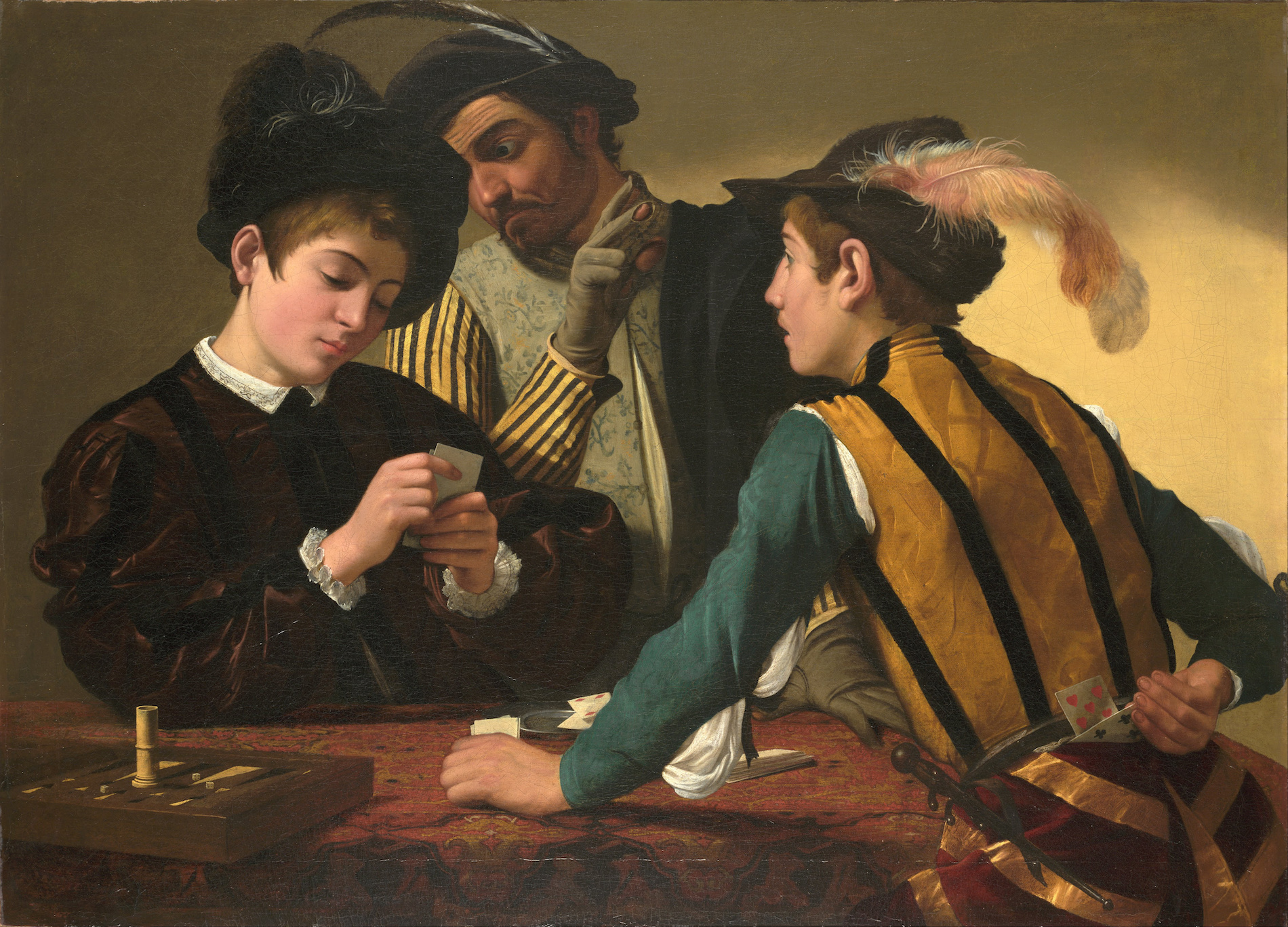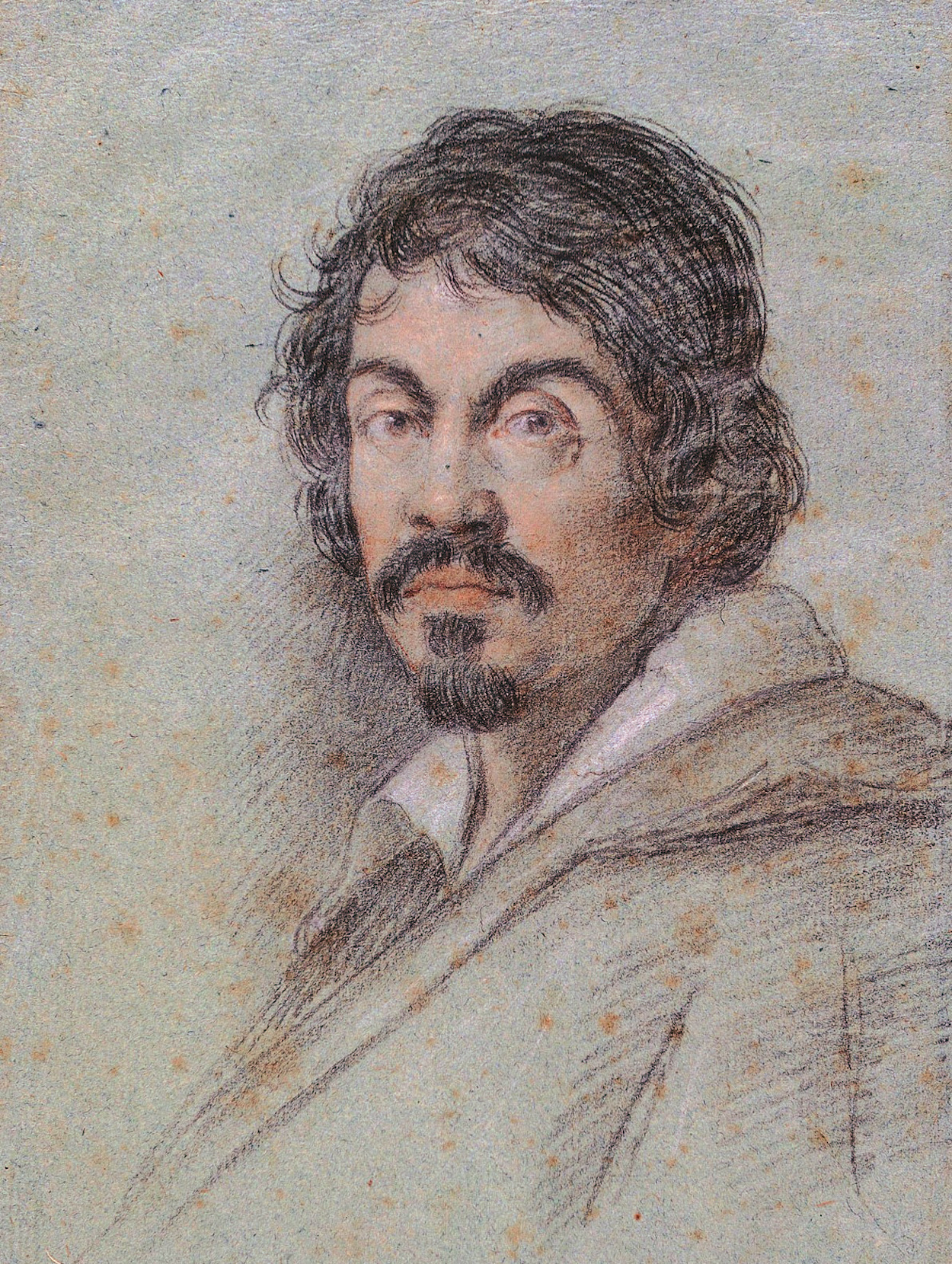In The Cardsharps, the players are engaged in a game of primero, a forerunner of poker. Engrossed in his cards at left is the dupe, unaware that the older cardsharp signals his accomplice with a raised, gloved hand (the fingertips exposed, better to feel marked cards). At right, the young cheat looks expectantly toward the boy and reaches behind his back to pull a hidden card from his breeches. No party can see or know everything they might wish to. There are things that the viewer can't observe though the figures can, and things the figures can't observe and the viewer can. The scene is constructed as a circuit of seeing and not-seeing, knowledge and ignorance, trust and deceit. The boy trusts in the invisibility of his cards. The cheats trust in the invisibility of their scheme. They must trust in their own alliance too. And something the viewer can see suggests this trust may be misplaced. Caravaggio has treated this subject not as a caricature of vice but in a novelistic way, in which the interaction of gesture and glance evokes the drama of deception and lost innocence in the most human of terms.
The Cardsharps spawned countless paintings on related themes by artists throughout Europe.
Help us and donate so we will be able to release the new version of DailyArt this autumn: http://support.getdailyart.com


 Caravaggio
Caravaggio